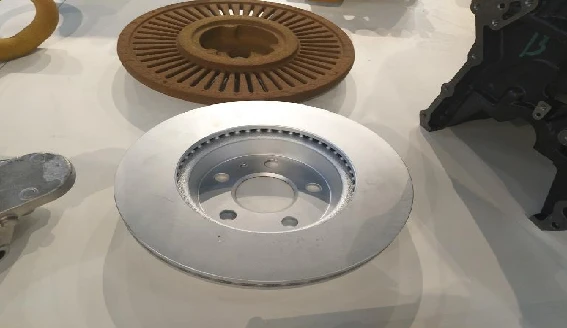Sanding Resin 3D Prints A Comprehensive Guide to Achieving a Flawless Finish
3D printing has revolutionized the way we create and manufacture objects, allowing for complex geometries and rapid prototyping. Among the various materials available for 3D printing, resin has gained significant popularity due to its ability to produce highly detailed models with smooth surfaces. However, achieving a polished and professional appearance often requires post-processing techniques like sanding. In this article, we will explore the importance of sanding resin 3D prints, the best practices for doing so, and the tools you need for a flawless finish.
The Importance of Sanding
Sanding is an integral part of the post-processing phase for resin prints. Unlike filament-based prints, which may exhibit layer lines and uneven surfaces, resin prints can have slight imperfections, such as textured surfaces or small artifacts left from the printing process. Sanding helps to eliminate these imperfections, allowing you to achieve a smoother surface and prepare the model for painting or further finishing.
Sanding also enhances the overall aesthetic of the print, making it look more professional and polished. This is particularly important for displays, prototypes, or functional parts that require a clean appearance. In industries such as gaming, automotive, and architecture, where aesthetics can significantly impact the final product, proper sanding can make all the difference.
Choosing the Right Sandpaper
Before starting the sanding process, it is essential to select the appropriate sandpaper. Sandpaper is available in various grits, which determine the coarseness of the paper. For initial sanding, a coarser grit, such as 100-220, should be used to remove any significant surface imperfections. As you progress, switch to finer grits, like 400-800, to achieve a smooth finish. For final touches, ultra-fine grit sandpaper (1000-2000) can be employed to create a near-mirror finish.
Tools and Techniques for Sanding
While sandpaper is a fundamental tool for sanding resin prints, several other tools can enhance the process
sanding resin 3d prints

2. Dremel or Rotary Tool For larger prints or areas that require heavy sanding, a rotary tool can speed up the process. However, caution is necessary to avoid removing too much material or damaging the print.
3. Dust Mask and Safety Gear Resin dust can be harmful if inhaled, so it’s vital to wear a dust mask and goggles during sanding to protect yourself.
The Sanding Process
1. Preparation Start by cleaning the resin print to remove any uncured resin. This can be achieved using isopropyl alcohol (IPA) and a soft cloth. Ensure the print is completely dry before sanding.
2. Initial Sanding Using your coarser sandpaper, sand the larger surfaces of the print. Move in a circular motion or in the direction of the grain, if applicable. Apply even pressure to avoid creating uneven surfaces.
3. Detail Work Switch to sanding sticks or finer sandpaper to work on intricate details. Be patient and take your time to ensure that small features are not damaged.
4. Transition to Finer Grit Gradually move to finer sandpaper, repeating the sanding process. Ensure each layer of sanding blends seamlessly into the previous one to create a uniform finish.
5. Final Touch-Up Once you achieve a smooth surface, you may want to buff the model with an ultra-fine grit to enhance the shine. A polishing compound can also be used at this stage for an even glossier finish.
Conclusion
Sanding resin 3D prints is a vital step in the post-processing workflow that can significantly enhance the aesthetic and functional qualities of your models. By selecting the right tools and techniques, anyone can achieve a professional-looking finish on their 3D prints. Remember to prioritize safety and patience throughout the process, and your efforts will result in polished, high-quality prints ready for any application. Whether you’re producing art, prototypes, or end-use parts, mastering the art of sanding will elevate your 3D printing projects to new heights.
Post time:नवम्बर . 17, 2024 10:15
Next:Choosing the Best Methods and Tools for Sanding Resin Projects
